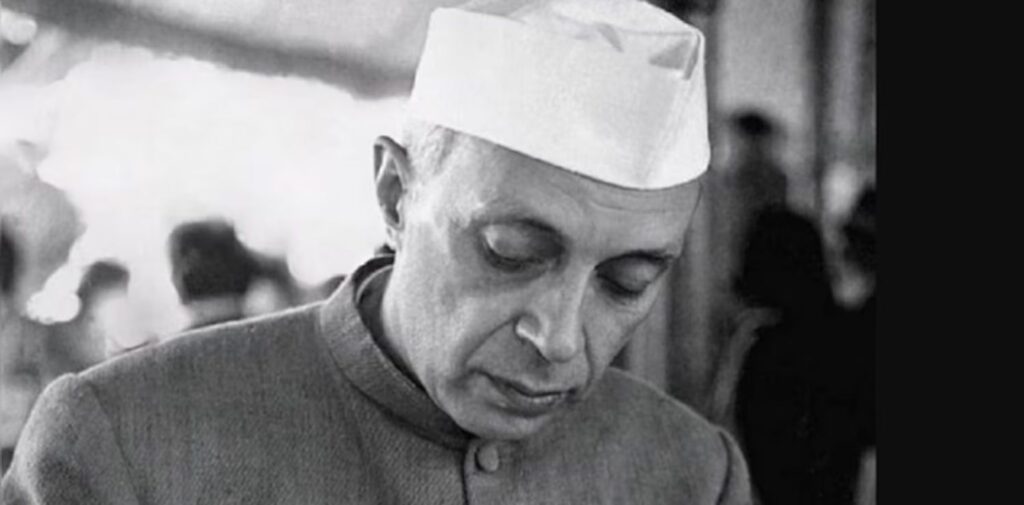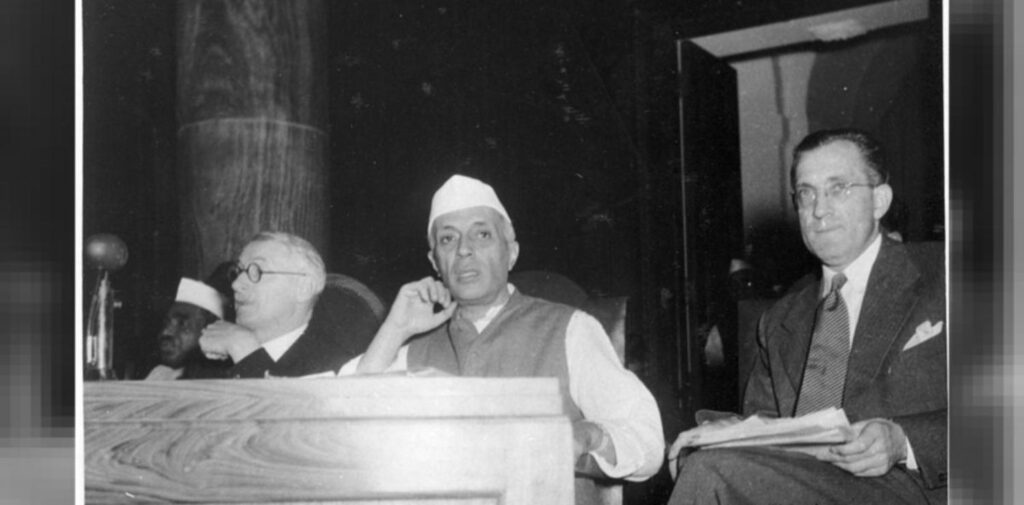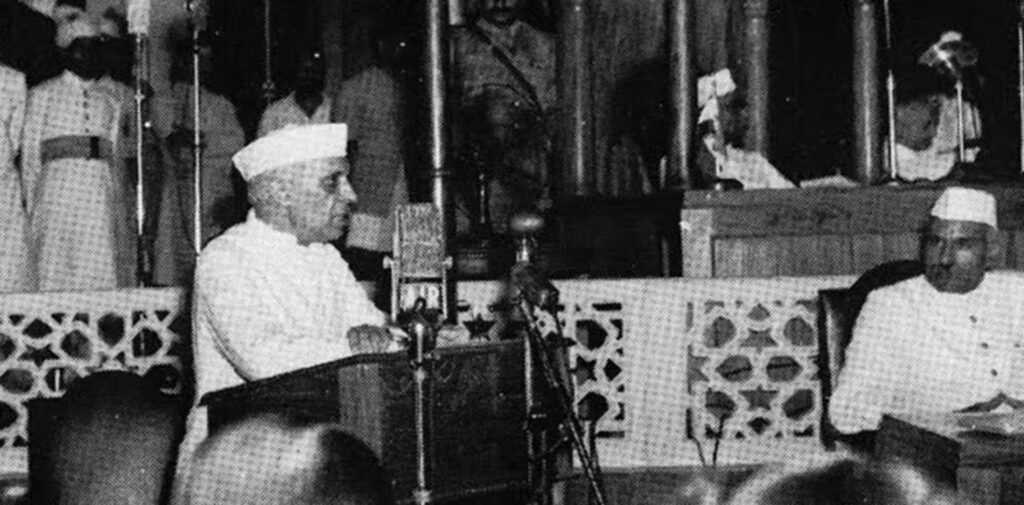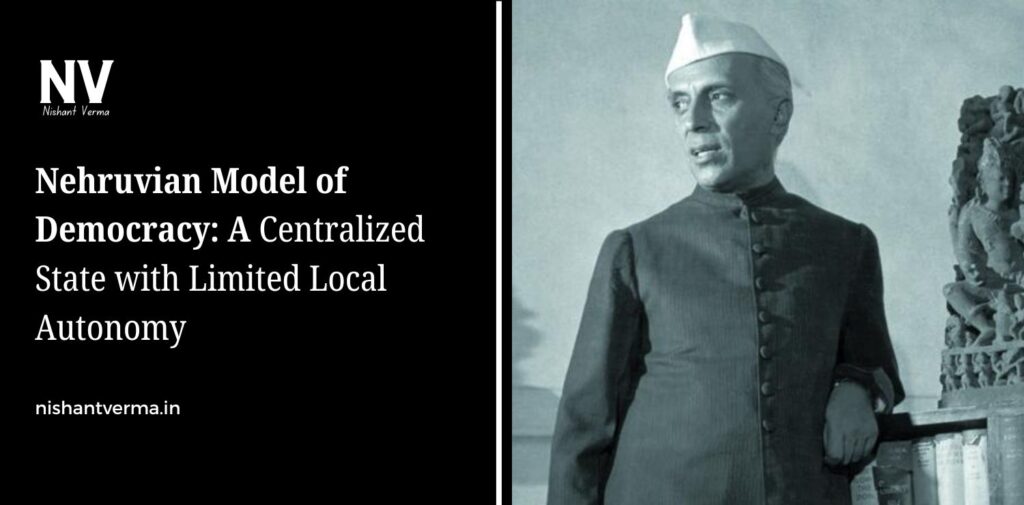India’s journey to independence was not just a political struggle; it was also about defining a new political system, a framework for governance that would guide the country into the future. Jawaharlal Nehru, the first Prime Minister of India, played a pivotal role in shaping this new democratic structure. His vision for India’s democracy was grounded in the ideals of unity, development, and social justice, but it also reflected a significant preference for a strong, centralized state. This centralized model of governance, often referred to as the “Nehruvian Model of Democracy,” placed considerable power in the hands of the central government, limiting the autonomy of local and regional authorities.
Nehru’s vision of a centralized democracy was based on several factors: the need to unite a diverse and fragmented nation, the desire for rapid economic development, and the need to create a stable political system. While this model did bring India a sense of unity and progress in the early years post-independence, it also resulted in challenges related to local autonomy and federalism. Over the years, critics of the Nehruvian model have pointed out that the concentration of power at the center has often stifled regional aspirations and slowed down local development. But how did this model work, and what impact did it have on Indian democracy?
The Vision Behind the Nehruvian Model
When India became independent in 1947, it was a country with deep ethnic, religious, and linguistic diversity. The idea of a united India was still fragile, and the task of nation-building was monumental. Nehru, along with other leaders of the Indian National Congress (INC), believed that a strong, central government was essential to maintain national unity and prevent the disintegration of the newly-formed nation. Given the colonial legacy of British rule, which had created divisions within the country, a powerful central government was seen as a stabilizing force.
Nehru’s democratic vision for India was inspired by the Western models of democracy, particularly the British parliamentary system. However, he believed that India’s democracy would need to be tailored to its own needs. This meant building strong institutions at the central level and using the government to drive economic and social change. At the same time, Nehru’s policies aimed at reducing regional disparities, promoting social welfare, and modernizing the country through industrialization and education.

A Strong Central Government
One of the key features of the Nehruvian model was the concentration of power at the center. Nehru and his colleagues in the Indian National Congress were deeply invested in ensuring that the central government had the ability to implement national policies effectively across all regions. This centralized approach was seen as necessary to achieve economic growth, maintain political stability, and integrate diverse regions into the fabric of the Indian state.
Nehru’s government took a strong role in formulating policies that impacted the whole nation. Centralized control over the economy, industry, and education was emphasized. National planning was seen as vital to steer the country’s development. The Planning Commission was established in 1950 to oversee the development process, and five-year plans were introduced to manage India’s economic growth. This approach was designed to ensure that all parts of the country were moving towards progress, but it also resulted in the central government making most of the important decisions.
In terms of governance, the central government had the power to enact laws, allocate resources, and control vital sectors like agriculture, industry, and education. The Indian Union’s Constitution, while defining the distribution of power between the central and state governments, still gave the center considerable influence over crucial matters. The Union List (which enumerates subjects under the exclusive jurisdiction of the central government) had a long list of areas where the central government could legislate without consultation with states.
Limited Autonomy for States
While the Indian Constitution set up a federal structure, with power divided between the center and the states, the actual practice of federalism in India was heavily tilted towards the center under Nehru’s leadership. The central government controlled key areas like defense, foreign policy, finance, and communication, leaving states with less significant powers in comparison.
Moreover, the central government often used its power to impose its will on states. This centralization of power limited the states’ ability to govern independently and make decisions that suited their specific regional needs. The central government’s approach to local autonomy was also reflected in the handling of regional issues. For instance, the states were often required to follow central directives on matters like education, healthcare, and industrial policy, without much room for local adaptations.
Nehru’s government also frequently used Article 356 of the Indian Constitution, which allows the central government to dismiss state governments and impose President’s Rule if the government in a state is deemed to be unstable. This provision, though necessary in certain cases, was criticized for undermining the autonomy of the states.

Economic Policies and Regional Disparities
One of the main reasons for a strong central government under Nehru was the drive for economic development. Nehru’s policies were centered around industrialization, modern agriculture, and infrastructure development. While this vision was vital for India’s growth, it often led to regional imbalances.
The central government’s focus on industrial hubs and infrastructure projects in major cities like Mumbai, Kolkata, and Delhi meant that other regions, particularly rural areas, were left behind in terms of development. The development process was driven by a top-down approach, where decisions were made at the central level, and states were expected to follow suit. As a result, certain regions, particularly the southern and eastern parts of India, felt neglected. This lack of local control in deciding what was best for their own development needs created a sense of frustration among regional leaders.
States like West Bengal, Tamil Nadu, and Andhra Pradesh, which were rich in resources, were often overlooked when it came to industrialization projects. States that were poorer or had fewer resources found themselves struggling to keep up with the policies set by the central government. Local leaders, particularly in these regions, often advocated for more autonomy to manage their own resources and policies, but the Nehruvian model of a centralized state did not allow for much of this flexibility.
The Emergence of Regional Movements
Over time, the lack of local autonomy and regional imbalances led to the rise of several regional movements. Leaders in different parts of the country began calling for greater political and economic autonomy to address local issues more effectively. In states like Punjab, Tamil Nadu, and Assam, calls for greater autonomy grew louder as people felt that their voices were being drowned out by the centralized government.
The demand for greater regional autonomy was further intensified after Nehru’s death in 1964. Regional parties, particularly those that felt sidelined by the central government, began to gain prominence. These movements questioned the centralized control of the Indian state and argued for a more decentralized system that could better address the unique needs of different regions.

The Legacy of the Nehruvian Model of Democracy
The Nehruvian model of democracy and governance left a lasting legacy in India. The centralized structure that Nehru implemented helped India maintain unity in the early years after independence and allowed the central government to implement national policies effectively. The centralization of power also allowed for large-scale infrastructure projects and industrialization, which contributed to India’s economic growth.
However, this model also led to many challenges. The lack of local autonomy resulted in regional disparities and feelings of alienation. The central government’s control over crucial areas meant that states often had little room to make decisions that were tailored to their unique needs. The demands for greater federalism and regional autonomy continued to grow, and over the decades, India has taken steps to devolve more power to the states, particularly through constitutional amendments like the 73rd and 74th amendments, which gave local governments more control over local affairs.
In conclusion, the Nehruvian model of democracy, with its emphasis on a strong centralized state, played a key role in shaping the early years of independent India. While it helped to maintain national unity and pursue large-scale development projects, it also limited local autonomy and contributed to regional disparities. The legacy of this model continues to influence debates about the balance between central authority and regional autonomy in India’s democracy today.




